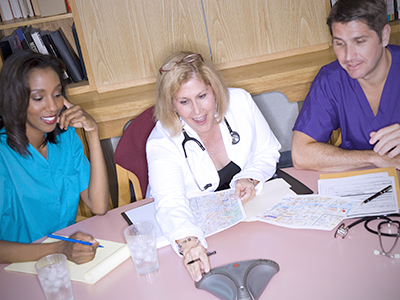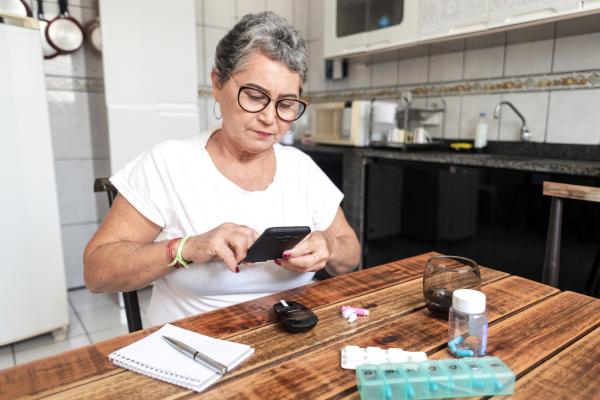
Family physicians and home health staff brought together by pro-active new approach.
Although family physicians (FPs) and home health staff (HHS) understand the value of coordinating care to improve the health of their shared patients, they continue to face major obstacles such as difficulty achieving timely communication to clarify medical orders, and limited opportunities to develop common care plans for patients with complex needs.
“Unfortunately, a family physician and community health provider such as a home care nurse don’t normally talk to each other until an issue arises,” says Vancouver Coastal Health Research Institute scientist Dr. Shannon Berg. “This reactive model of communicating sparked my interest in developing a way to have conversations about patients early on and setting up a pro-active shared care plan.”

A 2010-2011 study led by Dr. Berg, who is currently an associate with the Centre for Clinical Epidemiology and Evaluation and a former home health manager, assessed the effectiveness of pre-scheduled audio-conferencing to enhance communication and collaboration between 22 FPs and 48 full-time equivalent HHS.
For an eight-month period, half of the FPs (the intervention group) had the opportunity to communicate with the specific HHS staff involved with his or her patients, using a secure phone line for pre-booked 15-minute telephone conferences. FPs and HHS were provided with a weekly report that listed their shared patients. The use of audio-conferencing was evaluated using mixed methods (a combination of quantitative and qualitative). Overall, both FP and HHS participants felt that these structured communications about shared patients enriched not only their collaboration, but also the quality of patient care.
Study participants found that audio-conferences reduced their need for back-and-forth clarification and made communication more efficient. Both family physicians and home health staff gained a better understanding of the others’ services and work processes.
Dr. Berg’s study also suggested that high quality collaboration does not necessarily equate with more contact. “We believed that we would get an increase in shared patients and increased contacts about shared patients,” says Dr. Berg. “But we learned that quality is not synonymous with the quantity of contacts: with pro-active communication the number of contacts may actually go down as the quality of communication improves.”

Qualitative data pointed to at least three patient populations that may benefit from audio-conferences: first, individuals with functional and medical complexity like patients who need palliative care; second, those with social complexity such as those who have difficult communication styles; and third, individuals experiencing transitions, e.g. patients moving from their home to residential care.
Making audio-conferencing a routine reality in B.C.
In order to ensure the research was relevant, Dr. Berg brought together a broad-ranging team from 2007 (before the study was funded) through 2012 (when the study was complete). Those involved in shaping the study included FPs, HHS, managers, researchers, leaders from B.C. health authorities and the B.C. Ministry of Health. The objective of engaging such broad and varied knowledge users at early stages was to ensure that, if the intervention was successful, it could be implemented more easily.
“If we’re going to engage in research that’s going to change practice, we need to involve knowledge users from the start,” says Dr. Berg. “This helps develop buy-in because when knowledge users such as FPs and HHS are involved up front, they can help form the research questions, weigh in on whether the methodology is practical, and provide feedback as to how to interpret the data in the context of their environment.”
Based on Dr. Berg’s study along with other pilot work undertaken across the health authority, Vancouver Coastal Health implemented audio-conferencing in all three communities of care: Vancouver, Richmond, and Coastal. In 2013-2014, 443 conferences between HHS and FPs took place across VCH.
“This experience shows that when knowledge users and researchers are involved at the beginning, and stay involved together all the way through, they’re more inclined to apply results.”


